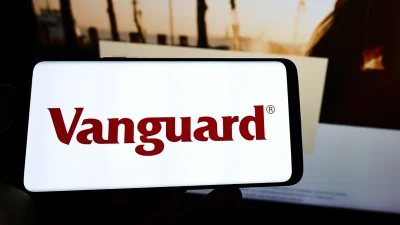ETFs v LICs: How do they compare?



Vanguard demystifies the key differences between exchange-traded funds (ETFs) and listed investment companies (LICs).
While ETFs and LICs may appear to be similar, the investment company has unpacked the notable variances between the two products.
ETFs invest in every company within a specific market index, such as the Vanguard Australian Shares Index ETF that invests in the top 300 Australian-listed companies.
Unlike this structure, LICs do not invest in every firm within a specific index. Instead, they typically invest in a smaller number of companies hand-selected by their investment team, according to Vanguard.
“They take an active portfolio management approach, generally aiming to outperform the investment returns from the broader share market that index-tracking ETFs aim to achieve.”
However, outperforming the market can be a difficult pursuit, Vanguard noted. Only eight of the 22 LICs that invest in portfolios of large Australian companies outperformed the 12.5 per cent one-year total return of the All Ordinaries Total Return Index, according to ASX data as at 30 June 2024.
In comparison, eight of the nine ETFs that invest across the largest ASX-listed companies outperformed the broader Australian share market over the same period.
One of the key differences between these products is that ETFs are an open-ended investment vehicle, meaning the number of units issued in the product will shift depending on the demand for the product. Meanwhile, LICs are close-ended products, so the units on issue are set at a fixed number.
The payment of dividends to investors is another important contrast between the two products. As LICs are companies, their directors have complete discretion as to whether dividend returns from their investments are distributed back to their shareholders.
For ETFs, all net investment income earned by these products are distributed back to its investors.
Moreover, ETFs tend to be lower cost with many products under 0.1 per cent in management fees. LICs, however, offer management expense ratios of between 1 per cent and 2 per cent, according to ASX data.
“The main points to consider are that ETFs generally provide much broader market exposures at a lower cost. Unlike LICs, ETFs are not governed by directors who have discretion on whether company dividend distributions are paid out or accumulated.
“Furthermore, index ETFs provide a high level of transparency in the sense that their investment holdings and weightings are fully disclosed,” Vanguard stated.
Recommended for you
Natixis Investment Managers has hired a distribution director to specifically focus on the firm’s work with research firms and consultants.
The use of total portfolio approaches by asset allocators is putting pressure on fund managers with outperformance being “no longer sufficient” when it comes to fund development.
With evergreen funds being used by financial advisers for their liquidity benefits, Harbourvest is forecasting they are set to grow by around 20 per cent a year to surpass US$1 trillion by 2029.
Total monthly ETF inflows declined by 28 per cent from highs in November with Vanguard’s $21bn Australian Shares ETF faring worst in outflows.












Just a thought.
Does Vanguard run any LIC's or do they just run ETF's?
Hard to accept this 'demystification' as an independent piece of research when the story is written by one of the participants.
Additionally, if your story ignores the active ETF's that some competitor participants run, your story is weakened.